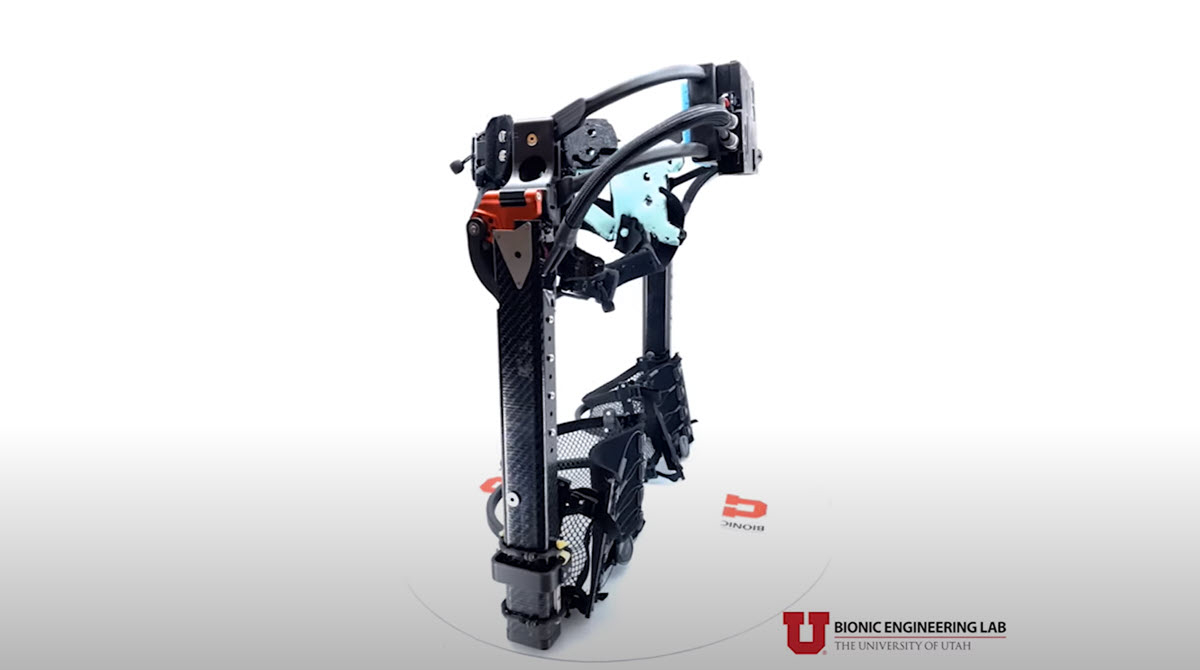Intelligent exoskeleton allows one-legged people to walk normally
A new exoskeleton enables people with leg amputations to walk normally, almost without limping. The robot leg supports leg amputees almost as well when walking as a real one.
The University of Utah’s new robotic leg is more than just a prosthesis. The system works by itself, so to speak. It also contains sensors and processors that analyze the wearer’s movements in order to be able to provide the most precise support possible on this basis.
The exoskeleton provides just enough support that walking feels natural and the wearer doesn’t have to expend too much energy to take a step. University of Utah engineer and lead developer Tommaso Lenzi likes to compare his invention to using an electric bike on an uphill climb.
The following video shows the exoskeleton in action. Even non-experts can easily see that the test person practically no longer limps with the help of the exoskeleton.
Because the exoskeleton is strapped around the waist, it is able to act from a stable body connection. Therefore, the built-in processors can control the motorized leg components to support a steady gait. In this way, the robotic leg actually helps its wearer when walking, instead of just offering passive balance support.
The so far only six test persons are unanimously enthusiastic about Lenzi’s invention. The comparison with the pedelec does not seem particularly far-fetched. “It felt as if I had a strong wind behind me, pushing me down the street,” one of the test subjects stated, adding that the device comes closest to walking on real legs. The subject had lost a leg in an accident.
“The first time I used it, it was like my muscles were completely fused into that exoskeleton and it helped them move faster. It helped my leg relax and just move forward and walk. I could probably run for miles on this thing because it helps my muscles move. “
Stan Schaar, test subject and retired computer administrator
Developer Lenzi published the first research results on the robotic leg in the magazine on Monday Nature Medicine released.



